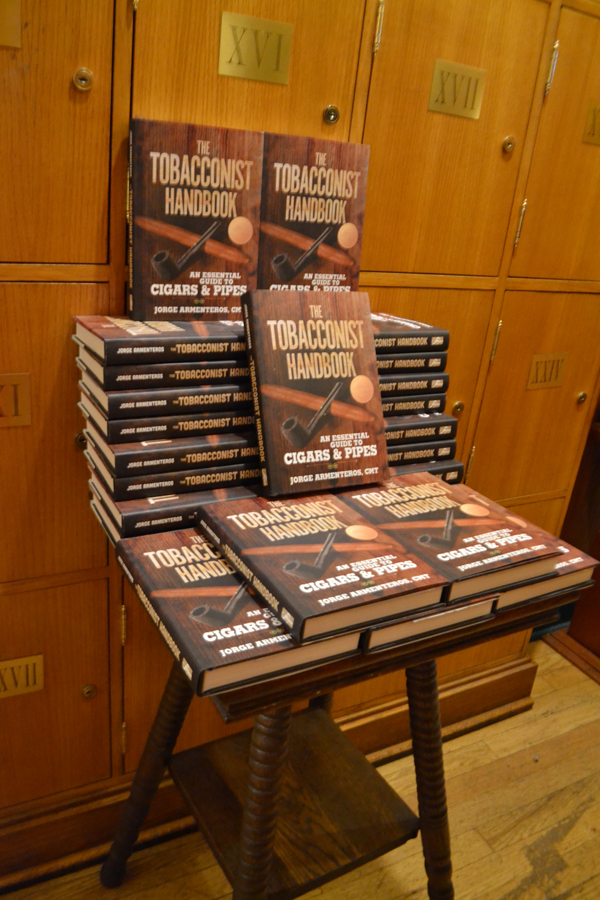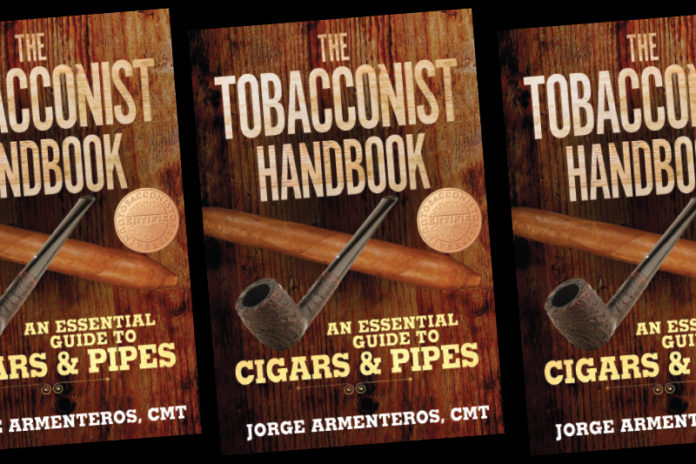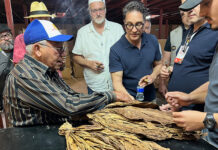In 2009, Jorge Armenteros published the first edition of The Tobacconist Handbook. At the time, Armenteros had to self-publish this book because few publishers showed any interest in releasing a book for such a niche market of tobacconists and cigar and pipe smokers. The Tobacconist Handbook has since evolved into the curriculum of Tobacconist University, a program that Armenteros designed to help bring more structure and professionalism to the tobacco retail industry. For tobacconists who wanted to up their retail game and become certified by Tobacconist University, The Tobacconist Handbook became an essential resource.
To an outsider, the concept of selling a cigar or pipe product to a customer may seem simple, but as Armenteros found out during his own time working as a tobacconist, in order to be successful it requires many skills as well as a level of customer service that many are unaware of.
“For example, as a retailer, I saw that 80 percent of the problems our customers had with butane lighters were easily fixed when the lighters were properly filled and maintained, and this is not something that new employees or customers would naturally be aware of,” Armenteros explains. “Another regular problem we had was customers adding more ‘special solution’ or propylene glycol to their humidifiers in an effort to increase humidity. Ironically, this had the opposite effect, and the internet and many retailers were contributing to the problem. The Tobacconist Handbook offered a physical reference that consumers and tobacconists could use to learn from and refresh their skills and knowledge.”
In November 2020, Armenteros announced the release of the latest edition of The Tobacconist Handbook, the first update to the book since its initial release in 2009. Armenteros discusses the new edition of The Tobacconist Handbook, how it was written, how it relates to Tobacconist University’s curriculum and why it’s a must-buy for every tobacco retailer in business today.
Tobacco Business: How did you go about writing the first edition and making it relevant to retailers in the industry at that time?
Jorge Armenteros: In late 2008, we had the idea to compile a “coffee table” book that would feature great pictures and facts about cigars. We imagined something beautiful and informative. The further we went down that path, the more difficult it became to edit the content of the book. It was a struggle to pick and choose what should go in the book. What is important? What is necessary? Then we would feel guilty for having to omit certain content. Every iteration of the coffee table book felt incomplete, and this feeling naturally led to the desire to create The Tobacconist Handbook.
The next big challenge became working with the printing limitations imposed on us. Everything from the size of the book to the number of pages and the cost and quality of color pictures became difficult to manage. The biggest challenge was trying to organize so much disparate information because The Tobacconist Handbook isn’t a story with a natural arc and flow; it is a distillation of a multimedia curriculum that spans four colleges, an FAQ section and a giant glossary.
So, to make a long story short, The Tobacconist Handbook is a distillation of the TU [Tobacconist University] academic curriculum, and we made editorial decisions by asking the ultimate question: Is this relevant to retailers? In that process it also became a great product for consumers as well.
What made you want to come out with an updated edition of The Tobacconist Handbook? How does the new edition of Tobacconist Handbook differ from the first edition? One of the best parts of hosting an online curriculum is the ability to add and improve the content at will—new pictures, video and copy are relatively easy and cheap to add. After a decade in print, The Tobacconist Handbook needed a refresh and expansion, but the cost of production was a challenge. Fortunately, the success of the book over the past decade helped us convince a publisher to create an updated and improved edition. The single greatest improvement is the price of the book. The new hardcover sells for 30 percent of the old paperback price. In addition, the quality of the pictures, pages and printing has dramatically improved.
The updated version of The Tobacconist Handbook includes a foreword by former Cigar Rights of America director J. Glynn Loope and a new section on the importance of public policy engagement and activism. It is a much-needed enhancement for an industry that faces extraordinary challenges. We also enhanced our Tasting School chapter with a section on tasting methodology, cigar pairings and Certified Cigar Reviews. These sections were in development for the better part of a decade, so they were not included in the original book release. In addition, there are new pictures, tobacconist tips and glossary terms throughout the book.
 How should readers use this book? Is this a book you need to read from cover to cover or is it more of a reference book? I think The Tobacconist Handbook provides a great fundamental education for lovers of luxury tobacco. It teaches history and product facts. The Tobacconist Handbook is an ideal reference guide for stores and their customers and a great place to start learning for anyone. Furthermore, we are living in an age where consumers are more educated than ever, so we have to keep up and be an example. It is a great reference for all consumers, especially when they are getting part of their education from the internet, where there is a great deal of misinformation and opinions disguised as facts.
How should readers use this book? Is this a book you need to read from cover to cover or is it more of a reference book? I think The Tobacconist Handbook provides a great fundamental education for lovers of luxury tobacco. It teaches history and product facts. The Tobacconist Handbook is an ideal reference guide for stores and their customers and a great place to start learning for anyone. Furthermore, we are living in an age where consumers are more educated than ever, so we have to keep up and be an example. It is a great reference for all consumers, especially when they are getting part of their education from the internet, where there is a great deal of misinformation and opinions disguised as facts.
How is the book organized? What are some of the different chapters or subject matters tackled within it? As previously noted, the updated version of The Tobacconist Handbook starts with a foreword and public policy section created by J. Glynn Loope, the former director of Cigar Rights of America. It then continues with our original foreword by Jorge and José Orlando Padrón. This section is a timeless testimonial to the importance of tobacconists from two of the world’s greatest cigarmakers. We then proceed through a short description of TU and our certifications, as well as a focused history timeline for tobacco. We then dig deep into Nicotiana tabacum, cigar tobacco varietals and processing techniques like air-curing and fermentation.








